
The Aesthetic: Goalie masks move from pure protection to protective works of art
With the NHL’s big centennial celebration already in full swing, faithful and casual fans alike have been getting an extra dose of hockey history. Everything from remembering past players to recalling some of the craziest games is fair game as we look back at the evolution of the league. One of the best markers of how the NHL has progressed is the evolution of the equipment, especially for the players posted up between the pipes.
Goalie equipment in general has gotten a lot of press over the past couple of years as work is being done to slim down the padding while keeping the netminders effective and safe. (Have you seen how much goalie pads have bulked up since the league started?) While those baggy pants becoming “skinny jeans” is the start of downsizing, there is one piece of equipment that will more than likely not get any smaller: the goalie mask.
In fact, of all the aspects of NHL, the goalie mask has gone through one of the most fascinating metamorphoses — from the brittle fiberglass face cover to the full-blown space helmet; from the simple Jason Voorhees "Friday the 13th" design to the decoratively painted murals we see goalies where every night on the ice. Since Jacques Plante made it his staple in 1959, the hockey goalie mask has truly transformed over the years, both as a means of keeping goalies safe and as a medium for very cool airbrush art.
Jacques Plante: The original man behind the mask
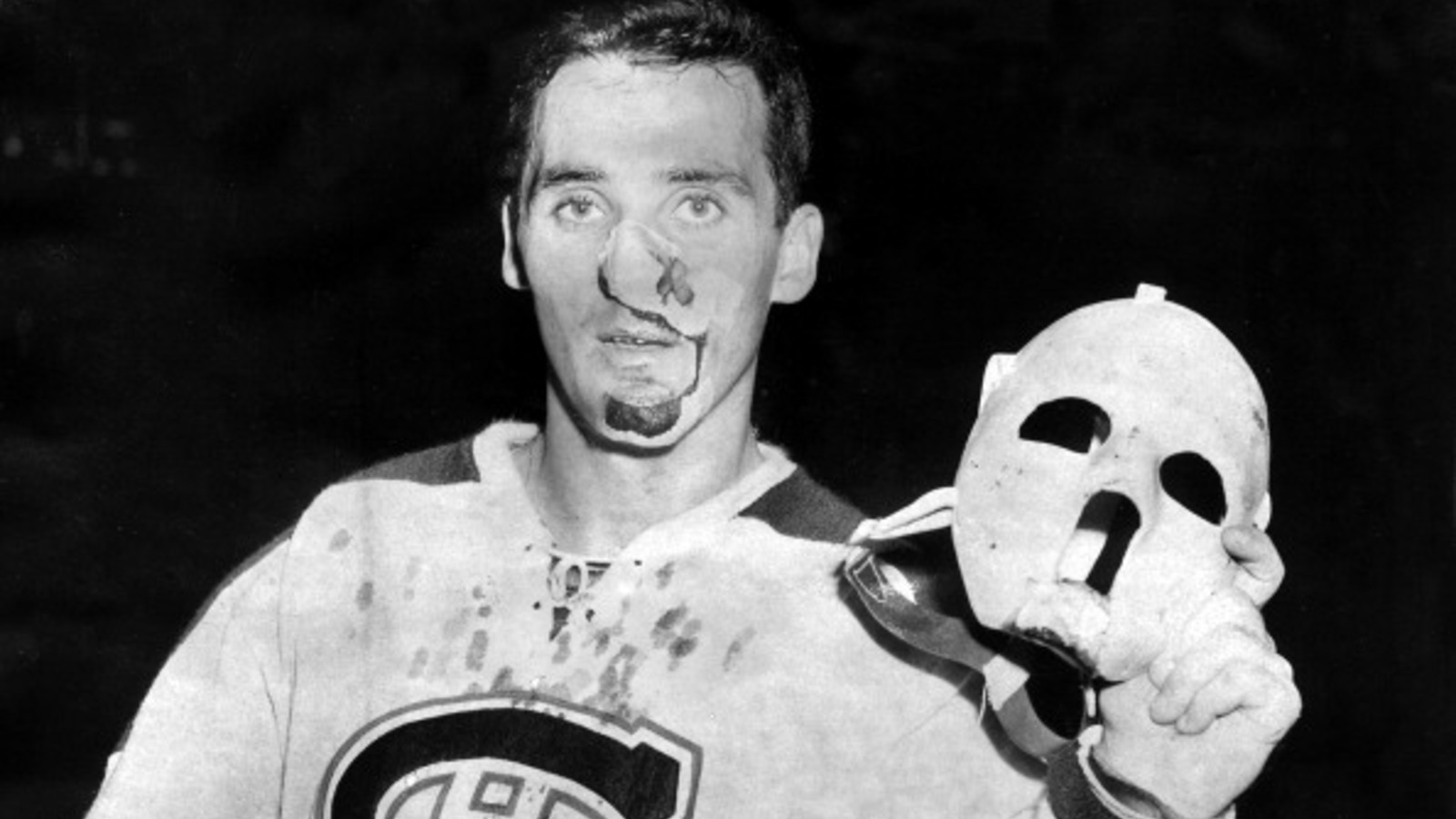
It is a bit terrifying to watch super old hockey footage. I mean, yes it is really cool to watch former players play the game. But there is no denying that the footage of skaters buzzing down the ice without helmets and shooting the puck at goalies who aren’t wearing masks induces a certain level of panic. The fact that goalies used to choose not to wear masks is a scary thing. Weren’t they afraid of taking a puck to the grill?
All of that changed on Nov. 1, 1959. But, of course, somebody had to get hurt before that could happen.
It was during the first frame in a tilt between the Montreal Canadiens and the New York Rangers. Standout winger and future Hall of Famer Andy Bathgate shot the puck at Montreal’s net, and it nailed Habs netminder Plante square in the face. After the ordeal, Plante, understandably, wouldn’t take to the ice without protection for his face and began wearing a very crude fiberglass face shield during games. It is chronicled that Plante was viewed as a weakling for insisting on covering his face up, and coach Toe Blake wanted Plante to stop wearing it once his injuries healed.
Blake reportedly changed his tune when the Habs won 18 straight whilst Plante rocked the face-wear. Other goalies, including Detroit Red Wing Terry Sawchuk, decided they were tired of taking pucks to the face and began to cover their mugs up as well.
Plante’s original mask now resides at the Hall of Fame in Toronto.
The 1970s: The real transformation of the goalie mask
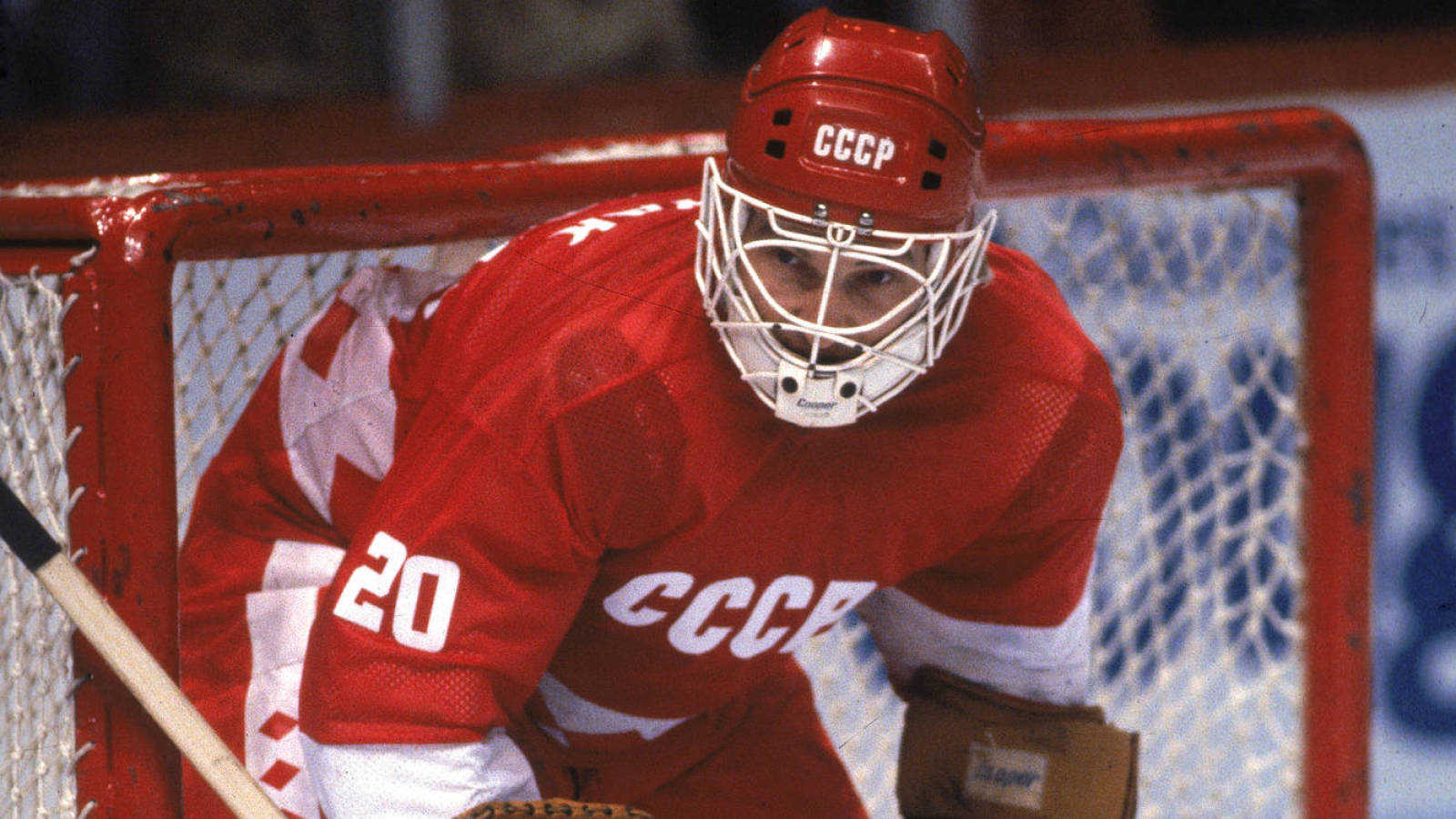
In 1974, Andy Brown became the last goalie to play without a mask, and everywhere around him, the mask was transforming from face guard to full-on head piece. The helmet featuring a cage was first seen in 1972, worn by Russian goaltending extraordinaire Vladislav Tretiak, and it quickly became a popular style among the goalies stateside. By the end of the decade, the cage visor was more common, and the head-covering helmet that we know today began to take its current shape.
In addition to the structure of the goalie mask changing, the practice of decorating the mask was also born in the 1970s. Gerry Cheevers and Ken Dryden are widely regarded as the OGs of mask art. In the late '60s–early '70s, Cheevers had his trainer paint stitches on his fiberglass mask in every place it got hit with a puck or stick.
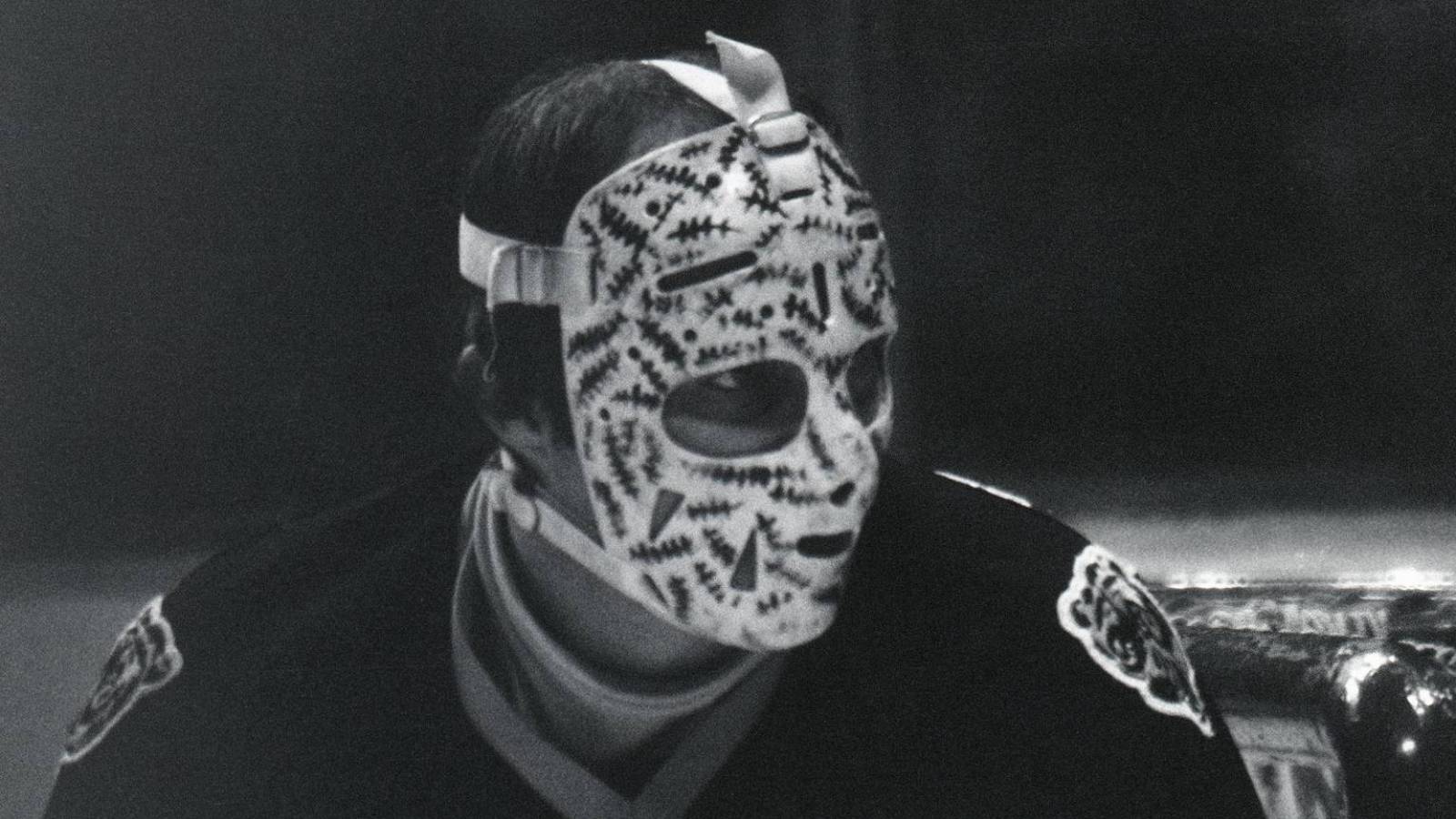
Dryden started wearing a skull-looking mask in college, before he rocked the red, blue and white Habs mask that looks as though it belongs in a horror movie.
Of course, now, goalie mask art is as much an identity piece for a netminder as having his name on the back of his sweater. All players on a team might wear the same uniform, but the goaltender can personalize his headgear.
Goalie mask art gives way to goalie mask artists
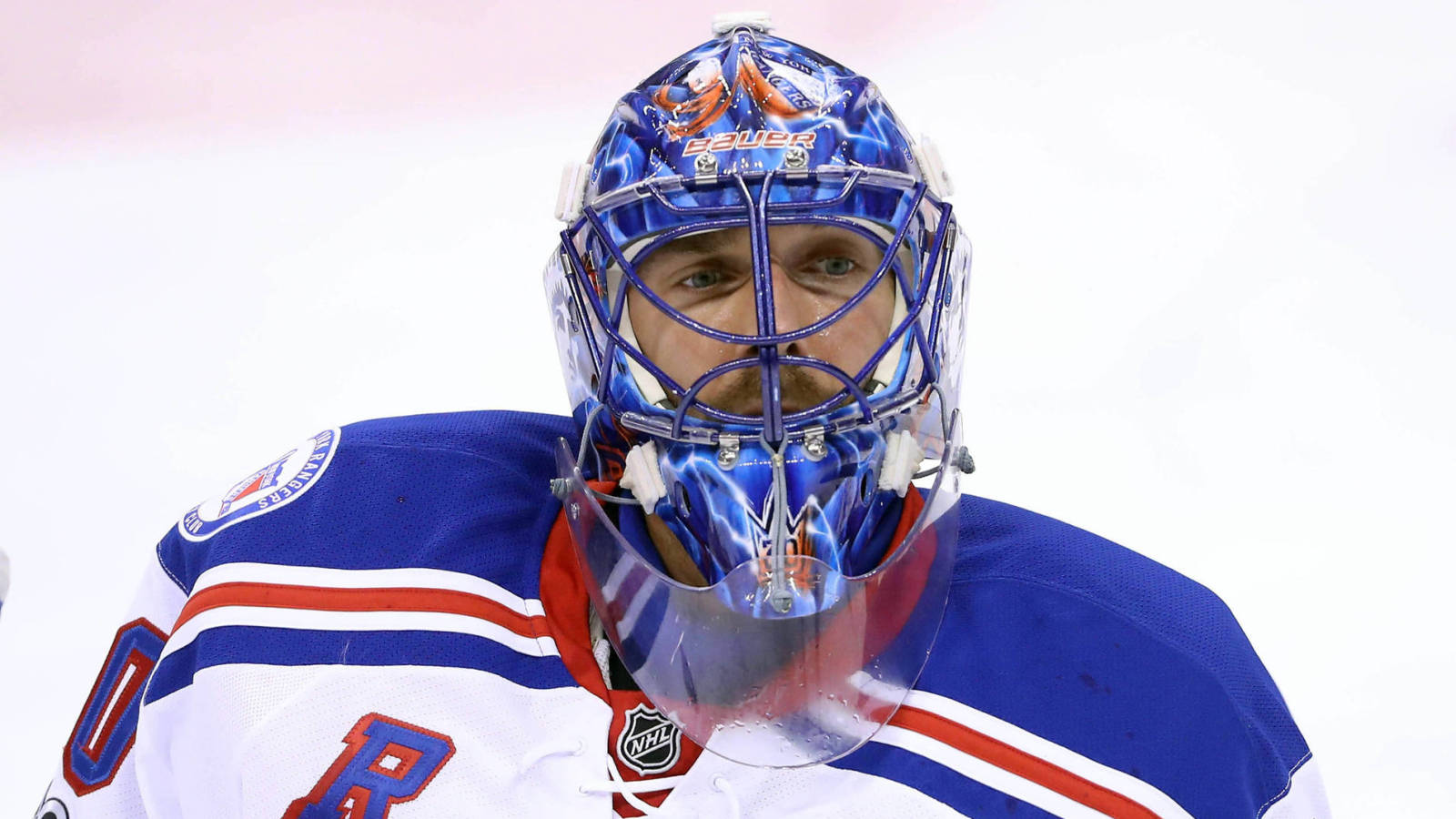
In modern-day hockey, getting a goalie mask painted is a bit like getting a tattoo. It's individual, personal and one of those niche showings of artistic talent that never fails to impress. Not surprisingly, as goalie mask art has risen to fame, so has the cast of artists who specialize in the craft. There is even an accessible directory of artists who put their painting skills to work for some of the NHL's most coveted netminders. And again, like with tattoos, many goalies return to the same artist season after season to put the finishing touches on their helmets.
There is one artist who outshines the rest in this category, David Gunnarsson. A swede and the mastermind behind DAVEART, Gunnarsson has worked with a plethora of professional goaltenders. Pekka Rinne, Carey Price and fellow countryman Henrik Lundqvist are among his top clients. (This also says something about the magnitude of his artistry, because Price has worked with many a painter in his day.)
The height of goalie mask aesthetics
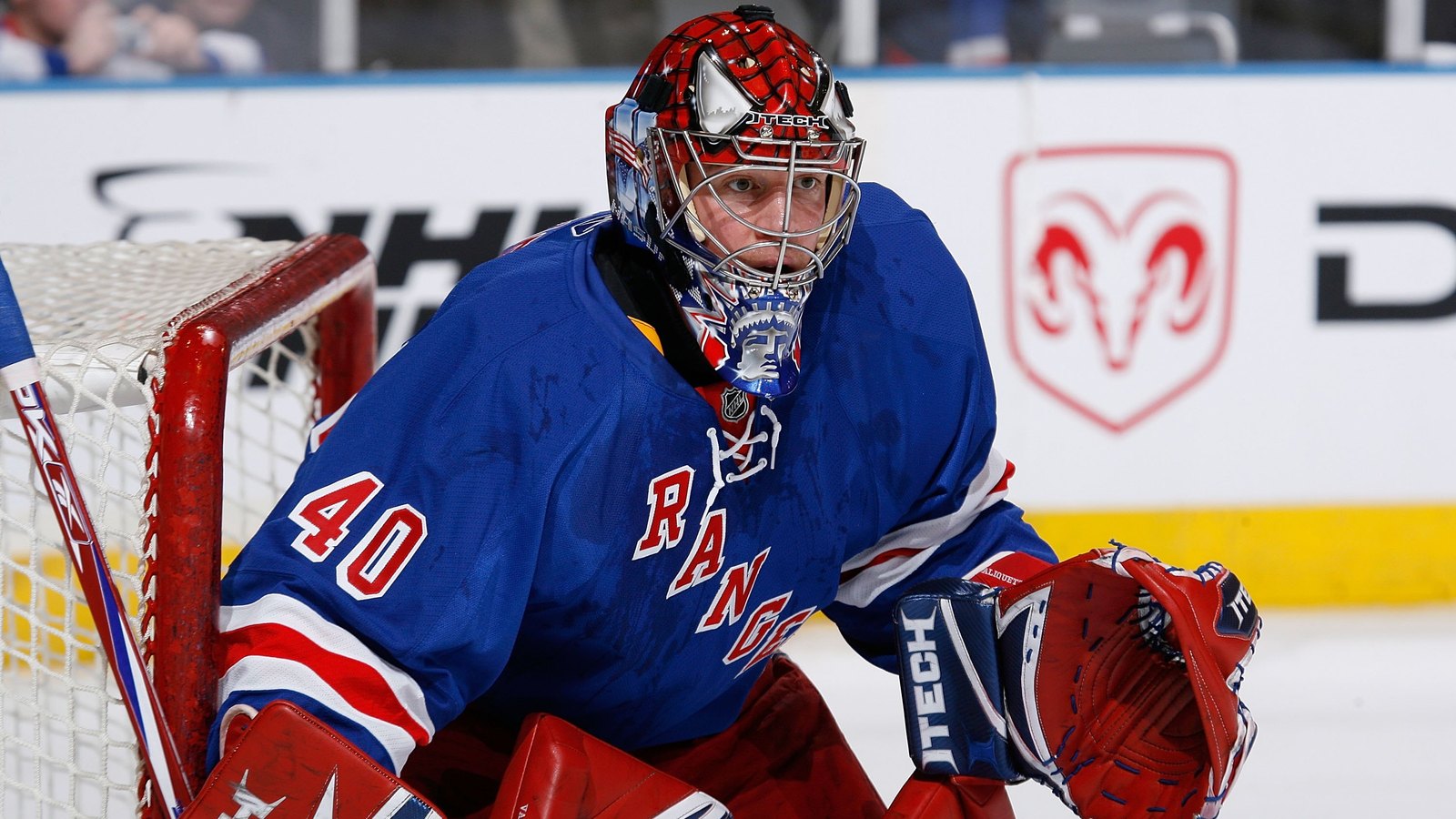
With the ability to decorate their own masks and a full head-covering helmet to work with, goaltenders have made personalizing their headgear an art medium. Teaming up with a painter from CCM to paint multiple masks a season is about as common as wearing white sweaters on the road. And with so much artistic freedom, some goalies have created serious masterpieces.
A nod to pop culture can be a big hit, like Steve Valiquette’s “Spider-Man” or James Reimer’s “Optimus Prime," which he morphed into Transformers-style sharks when he was traded to San Jose.
James Reimer has an Optimus Prime mask because his nickname is "Optimus Reim". Annnnddd he's the coolest goalie ever pic.twitter.com/KzroXWyeJm
— Aidan Carlsen (@Sharkaiders) March 5, 2016
Ed Belfour played for a handful of teams but had a striking eagle print on every mask he ever wore.
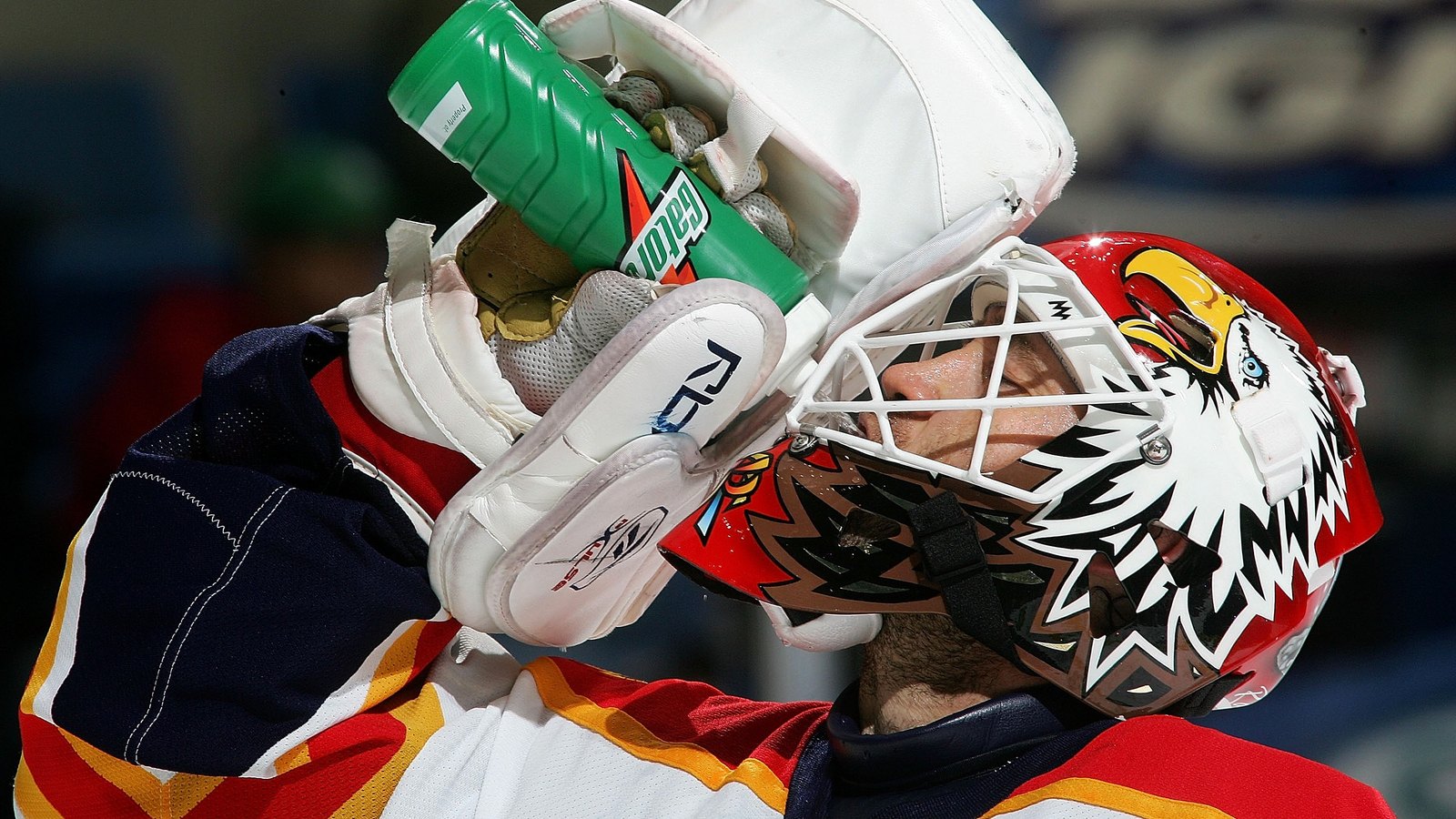
Heavy metal-inspired artwork is also a hit, like Evgeni Nabokov’s skeleton mask or Jean-Sebastien Giguere’s “Yeti.”
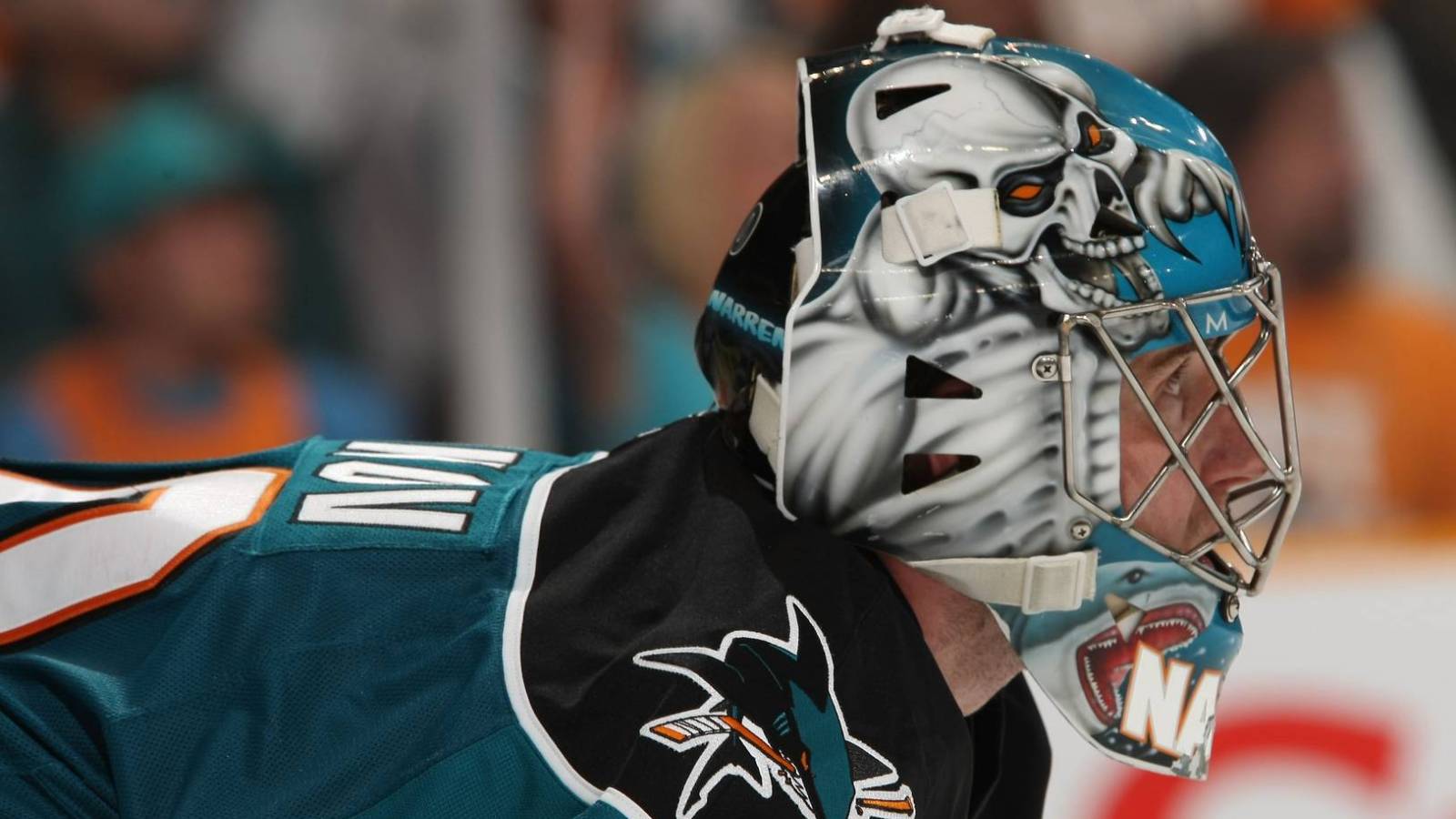
Of course, sporting good musical taste is about as good as wearing a concert T-shirt onto the ice. Brent Johnson brought out the best of both worlds with his Led Zeppelin tribute masks.
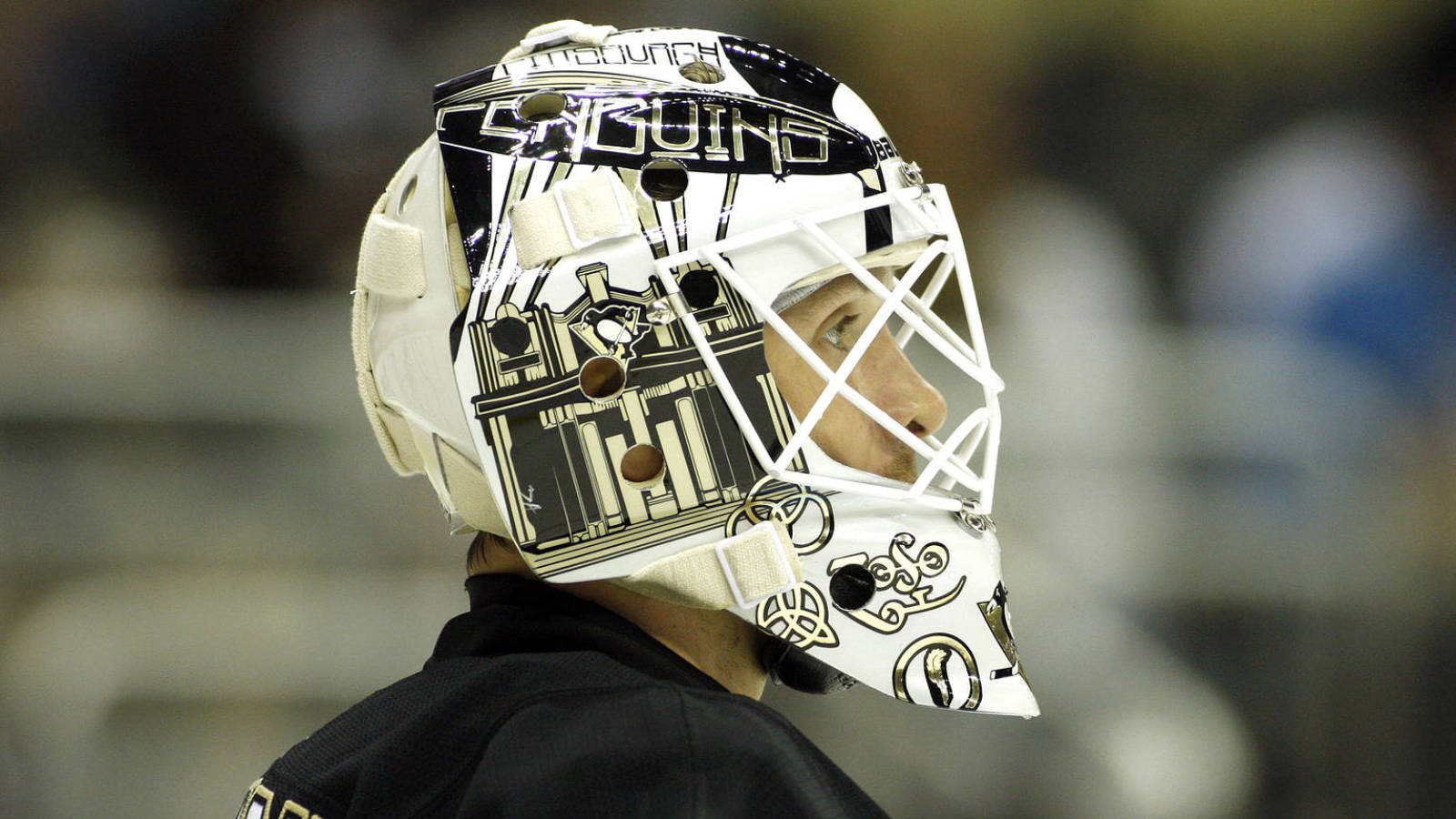
Penguins netminder Marc-Andre Fleury got both creative and nostalgic with one of his masks ahead of his 2013-14 campaign. Among the personal pieces that adorned the sides of the helmet, Fleury’s long-time artist emblazoned the forehead of the mask with a “flower” wearing a Jacques Plante-style goalie mask.
Marc-Andre Fleury's new "Jacques Plante" mask. #PittsburghPenguins #NHL pic.twitter.com/tQgXaNtE9L
— Daniel Mokoros (@DMokoros) August 23, 2013
Not a bad ode to the original masked man.
The masks that flopped

Sometimes, freedom of artistic expression also results in some terrible things. Not even goalie masks can be saved from a bad paint job.
Roberto Luongo has had some good masks over the years, but his “dirty snow” mask that he wore while playing for Vancouver always comes to mind when thinking of an art idea gone wrong. The look was meant to be clean and simple, but in the end it just looked, well, dirty.
The award for “good mask idea gone awry” definitely goes to Jamie McLennan, however. The netminder had a good idea when he wanted to put rock bands on his mask — except that instead of good rock bands, he had the likes of Nickelback all over his skull.
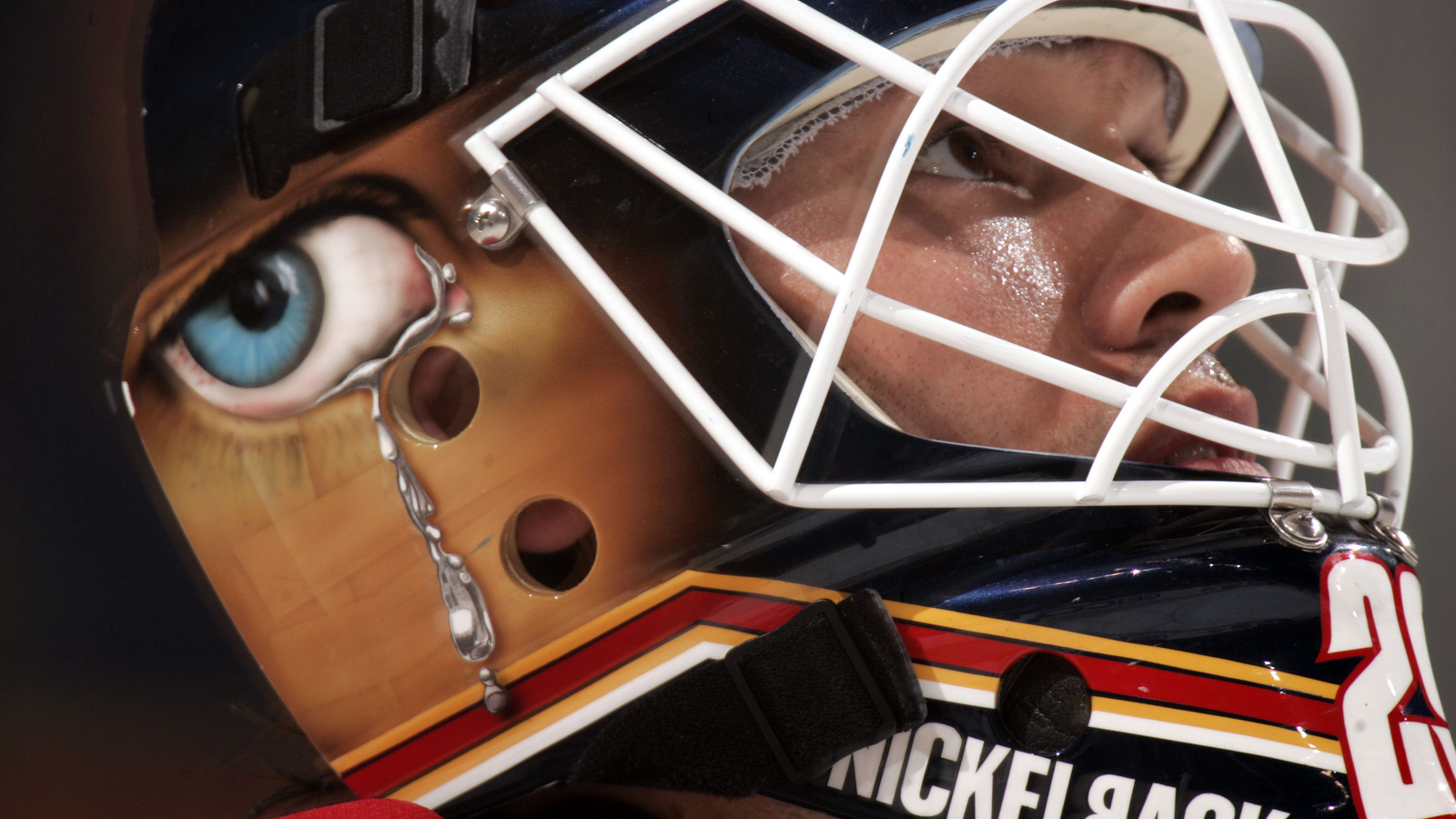
If there’s one thing that will make you lose all credibility, it’s flaunting bad musical taste.
And let’s be honest, sometimes the mask art crosses the line from “bad-ass” to “creepy.”
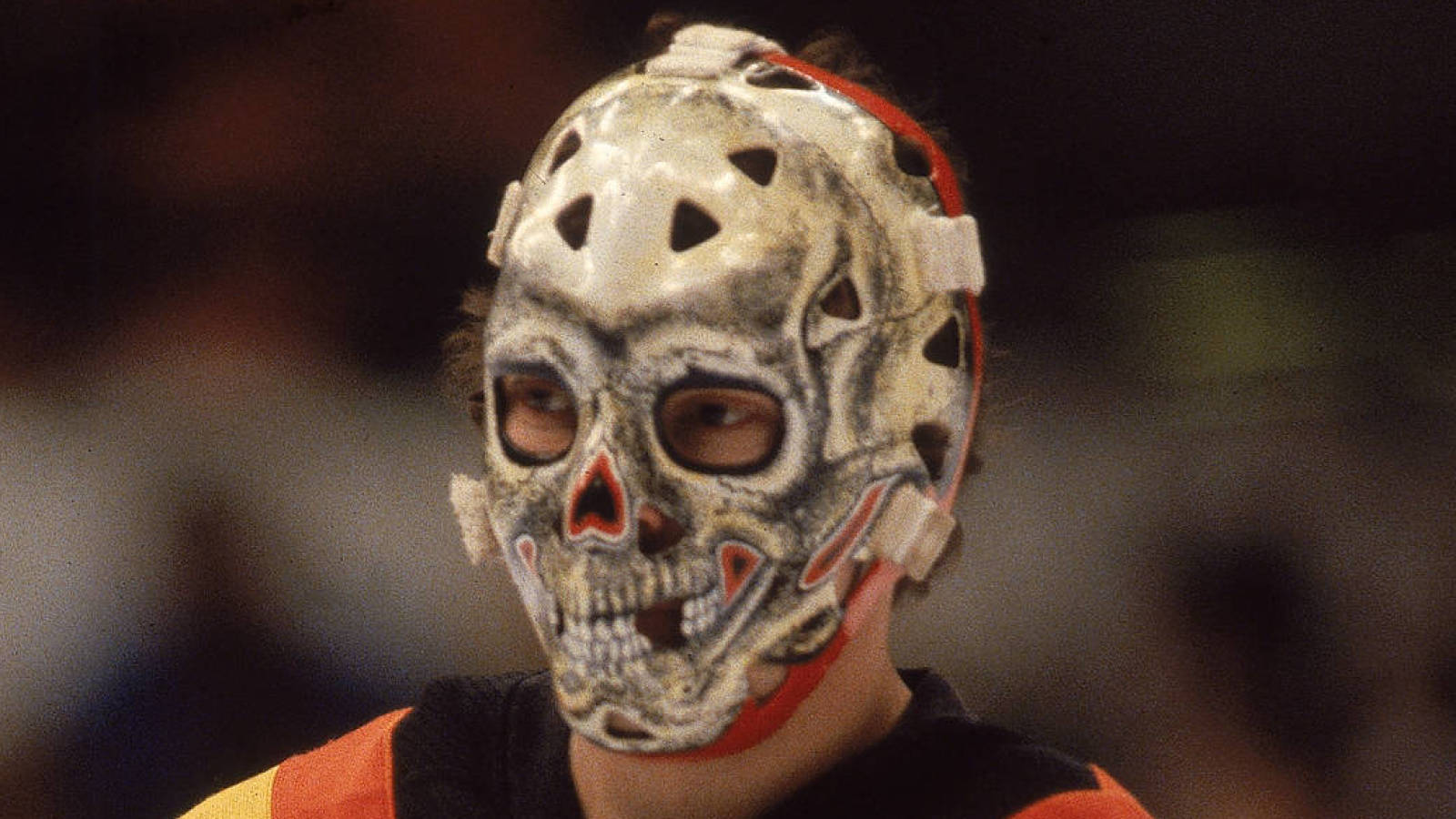
While Gary Bromley’s “Bones” mask is iconic, it is also just about the most nightmare-inducing piece of hockey equipment to ever exist.
Looking to the future
With hockey equipment continuing to evolve, there’s no telling how the shape and aesthetic of the goalie mask might change to better suit a goaltender’s needs. As far as the artistic side of things goes, that trend will probably never go out of style.
It is anyone’s guess what the future holds for the goalie mask, and chances are the designs will only get more elaborate.
And to think, it all started with one Hall of Fame goalie not wanting his face broken into a million pieces.
PREVIOUSLY FROM 'THE AESTHETIC':
More must-reads:
- Biggest news and moves from NHL trade deadline
- The biggest snubs and surprises from the NHL 100 Greatest Players list
- QUIZ: Name the goaltenders with the most career shutouts for every NHL team
Breaking News
Customize Your Newsletter
 +
+
Get the latest news and rumors, customized to your favorite sports and teams. Emailed daily. Always free!

